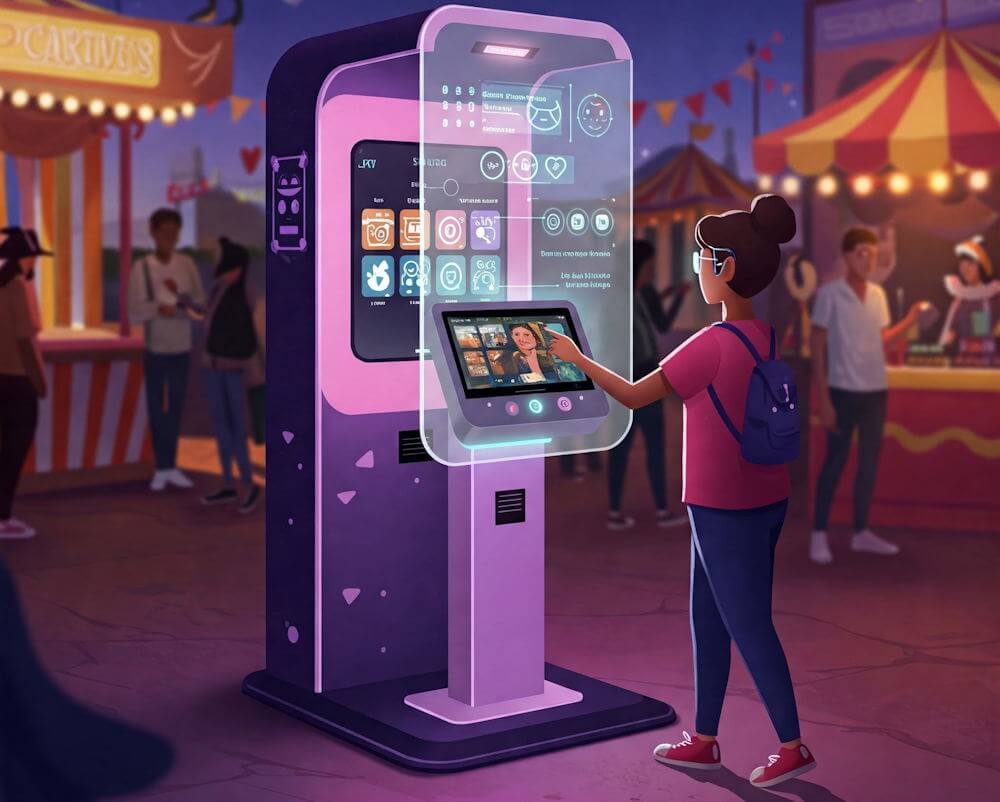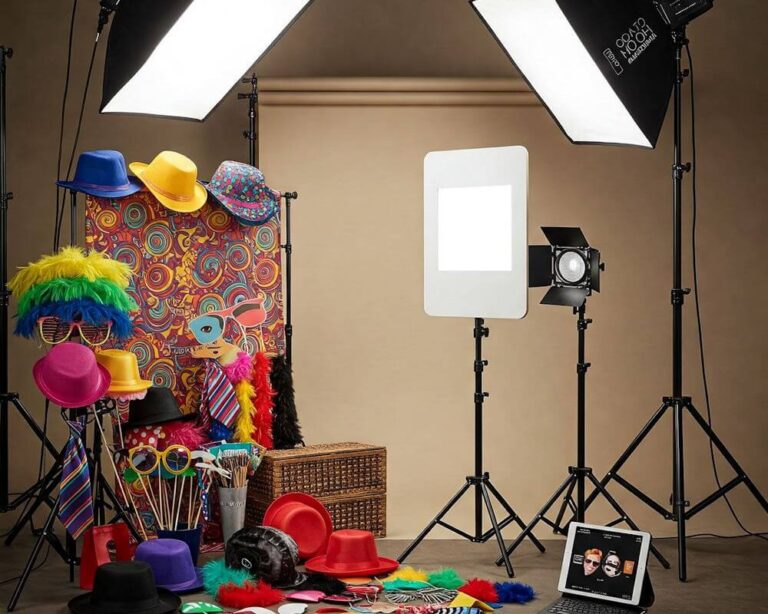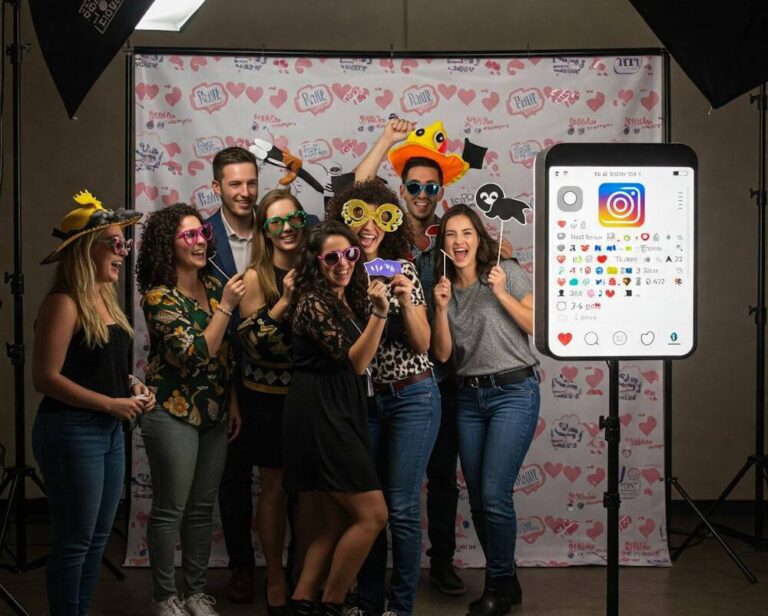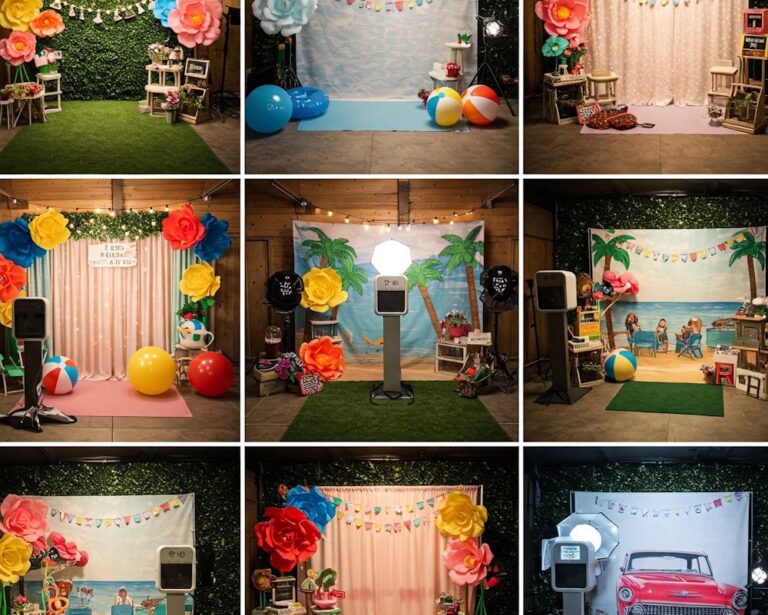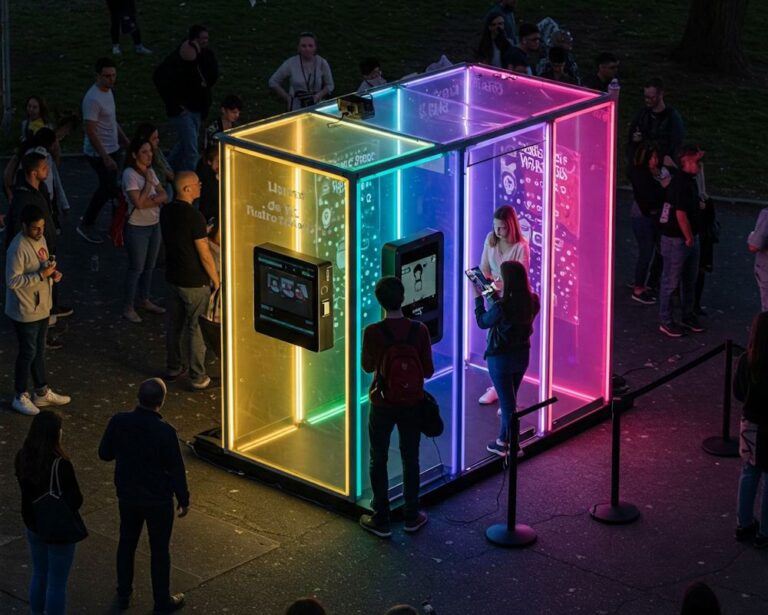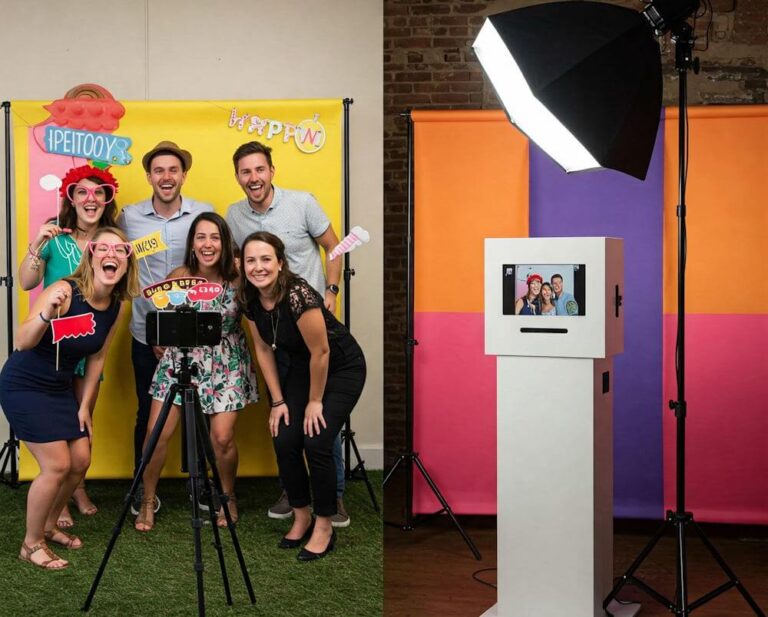Introduction to Augmented Reality (AR)
Augmented Reality (AR) is a technology that overlays digital information—such as images, sounds, and other data—onto the real world, allowing users to interact with both physical and virtual elements simultaneously. Unlike Virtual Reality (VR), which immerses users in a fully virtual environment, AR enhances the real-world experience by adding layers of digital content. This distinction is crucial, as it opens up new avenues for engaging with our surroundings in a way that feels intuitive and informative.
The concept of AR is not new; it has been around in various forms since the early 1990s. However, recent advancements in smartphone technology, computer vision, and cloud computing have catalyzed its growth, making it more accessible and user-friendly. Today, AR is experiencing a surge in popularity across several fields, including gaming, education, healthcare, and marketing. For instance, mobile applications like Pokémon GO have made AR a household name, blending gaming with real-world exploration, while educational platforms are leveraging AR to create immersive learning experiences that enhance student engagement.
In addition to gaming and education, businesses are recognizing the potential benefits of AR in marketing. Retailers are integrating AR into their shopping experiences, allowing customers to visualize products in their own space before making a purchase. This not only improves customer satisfaction but also helps reduce returns, as consumers can better understand what they are buying. Furthermore, AR is becoming increasingly relevant in fields like healthcare, where it is utilized for training simulations and patient care innovations.
The rapid adoption of AR demonstrates its vast applications and transformative potential across various industries. As technology continues to advance, the ways in which we utilize augmented reality will likely expand, reshaping our interactions with both the digital and physical worlds.
Understanding the Basics of AR Technology
Augmented Reality (AR) technology integrates digital information with the physical environment, enhancing user experiences by overlaying virtual elements onto the real world. One of the key components that make AR possible is computer vision, which enables devices to interpret and understand the visual data captured through a camera. Essentially, computer vision involves algorithms that process real-time images, facilitating the detection of objects, faces, and scenes. This capability allows AR applications to identify specific locations and align digital content accordingly.
Simultaneous Localization and Mapping (SLAM) is another critical technology that underpins AR systems. SLAM enables devices to create a map of an unknown environment while simultaneously keeping track of their location within that space. This technology is especially important for mobile AR applications that require accurate positioning and spatial awareness. By using various sensors, such as accelerometers and gyroscopes, SLAM algorithms can continuously update the user’s position relative to their surroundings, ensuring that virtual objects remain anchored in the correct physical locations.
Depth sensing contributes significantly to the effectiveness of AR by allowing devices to perceive the distance between objects. This technology typically employs infrared sensors or structured light systems to create a depth map of the environment. With a better understanding of spatial relationships, AR applications can generate more realistic interactions between virtual and real-world objects. For instance, depth sensing enhances the way digital characters can interact with surfaces and navigate around obstacles in a user’s environment.
By grasping the fundamentals of these technologies—computer vision, SLAM, and depth sensing—readers can appreciate the technical foundation that enables Augmented Reality experiences. This understanding provides a solid basis for exploring how AR can be effectively incorporated into various projects, regardless of the user’s technical background.
Choosing the Right Tools and Platforms for AR Development
When embarking on augmented reality (AR) development, selecting the appropriate tools and platforms is a crucial first step. Different environments cater to specific project requirements, and understanding these nuances can significantly streamline the development process.
For iOS developers, Apple’s ARKit stands out as a robust platform. It allows for the integration of virtual objects into real-world environments through the device’s camera, harnessing advanced features such as motion tracking, environmental understanding, and light estimation. Utilizing ARKit requires familiarity with Swift or Objective-C, as it is tightly integrated with Apple’s iOS ecosystem, making it ideal for applications targeting iPhone and iPad users.
Conversely, Android developers can leverage Google’s ARCore. Similar to ARKit, ARCore provides tools for motion tracking and environmental understanding, enabling the positioning of digital content within physical spaces. ARCore supports a wider range of devices compared to ARKit, accommodating many Android models, thus broadening the potential user base for applications designed with this platform.
For those aiming to create cross-platform AR experiences, tools like Unity and Vuforia present excellent alternatives. Unity is a powerful game development engine that supports AR through various plugins, including Vuforia, AR Foundation, and others. This flexibility allows developers to create immersive experiences that can run on multiple platforms without needing to rebuild the application for each operating system.
Vuforia, on the other hand, focuses specifically on AR, offering features that enhance image recognition and object tracking capabilities. Its compatibility with Unity further enhances its utility, providing a seamless development experience for team members proficient in game design. Ultimately, the choice of tools will depend on factors such as the target audience, specific project requirements, and the skill set of the development team.
Designing an Effective AR Experience
Creating an effective augmented reality (AR) experience involves careful consideration of various design principles that enhance user interaction. One primary aspect is user interface (UI) design, which should prioritize simplicity and responsiveness. When designing AR applications, it is essential to ensure that the interface is intuitive, allowing users to navigate effortlessly through different features. Employing familiar gestures and layouts will help users feel at ease, reducing the learning curve associated with new technologies.
Another important factor is user experience (UX) principles. An effective AR experience should be engaging and immersive. To achieve this, developers must craft scenarios where digital elements seamlessly blend with the real world. Utilizing the physical environment in which the user operates can significantly boost interactivity. For example, an AR application for furniture shopping could allow users to visualize how a couch looks in their living room, making the experience not only practical but also enjoyable. Adding contextual information and interactive elements relevant to the user’s environment will foster a deeper connection with the AR content.
Moreover, content creation is vital in ensuring that the AR experience is memorable. Developers should focus on creating high-quality, visually appealing elements that can capture users’ attention. Content should leverage the unique capabilities of AR, such as 3D graphics and spatial recognition, to provide an enhanced understanding of the material being presented. Additionally, utilizing audio cues can enrich the sensory experience, providing guidance and feedback as users interact within the AR environment. By harmonizing multimedia elements, creators can cultivate a more immersive journey that resonates with users.
Ultimately, designing an effective augmented reality experience requires a balanced approach, integrating UI and UX principles with thoughtful content creation. By focusing on these areas, developers can create immersive AR experiences that not only engage users but also elevate their overall interaction with the project.
Building Your First AR Application: A Step-by-Step Guide
Creating an augmented reality (AR) application can seem intimidating at first, but with the right guidance, anyone can embark on this innovative journey. This section outlines a comprehensive step-by-step process to build your first AR application from scratch, ensuring that beginners gain valuable hands-on experience.
Firstly, the initial step is to set up your development environment. You will need a computer with the appropriate software installed, such as Unity and an AR development kit like Vuforia or AR Foundation. Unity is a powerful game development platform that supports multiple AR workflows. Once downloaded, familiarize yourself with its user interface, as it is where you will be building your application.
Next, create a new project in Unity. Make sure to select the correct template for augmented reality, which will streamline the integration of AR functionalities. Once the project is set up, you should import the AR toolkit you have chosen. For instance, if using Vuforia, import the Vuforia Engine package into your Unity project using the Package Manager.
Now, it’s time to design the basic layout of your AR application. Begin by adding AR capabilities in the settings, which will enable the software to use device cameras for displaying AR content. Create a simple scene and add a plane that will act as the surface for your AR content. This will help orient your virtual elements within the real-world environment.
After establishing the scene, implement code to define the interactions within your AR application. The scripting can be done in C#. A basic script could include instantiating 3D objects that will appear when the device detects specific markers or planes in the real world. Integrating 3D models is crucial; you can either create them or download free assets from online repositories.
Finally, test your application on a compatible device. Deploy the app onto a smartphone or tablet with AR capabilities and ensure that the functionality works as intended. Regular testing throughout the development will provide insights into performance and usability, paving the way for enhancements in future iterations.
Testing Your AR Application
Testing is a critical phase in the development of any augmented reality (AR) application, as it ensures that the app functions seamlessly across various devices and environmental settings. Given the complexity associated with AR technology, which relies heavily on real-time data processing and integration of virtual elements within the physical world, thorough testing becomes imperative to deliver a reliable user experience.
One effective method of testing AR applications is through the use of unit testing, which focuses on validating individual components for correctness. This can be complemented by integration testing, which checks how different modules work together. Additionally, user interface testing is essential to ensure that the AR elements interact smoothly with real-world objects and perform as intended in real-time scenarios. Moreover, conducting exploratory testing allows developers to uncover unexpected behavior by simulating different user interactions and environmental factors.
Various tools are available for debugging AR applications, which can facilitate the identification and fixing of issues effectively. Some widely used tools include ARKit for iOS and ARCore for Android, both of which provide built-in debugging functionalities. Furthermore, external testing frameworks like TestFlight can be utilized for beta testing, allowing developers to gather feedback from real users before the official launch. Performance optimization is also vital; ensuring that the application maintains high frame rates and low latency will enhance the overall user experience. Techniques such as optimizing assets, implementing a level of detail (LOD) system, and reducing draw calls can significantly improve performance across diverse devices.
Ultimately, efficient testing of AR applications relies on a combination of rigorous methodologies and modern tools, ensuring that the app not only meets but exceeds user expectations in real-world environments.
Deploying and Distributing Your AR Application
Once you have developed your augmented reality (AR) application, the next critical phase is its deployment and distribution across various platforms, notably the App Store and Google Play. This step is essential to ensure that your application is accessible to users and provides them with a seamless experience. To begin, familiarize yourself with the specific submission processes for each platform. Both App Store and Google Play offer detailed guidelines that developers must adhere to, specifically concerning functionality, user interface, and privacy policies.
Before submission, it is imperative to conduct thorough testing of your AR application. This includes ensuring compatibility with a variety of devices, checking for performance stability, and confirming that all AR functionalities work as intended. Additionally, consider obtaining beta testers’ feedback to uncover any potential issues that might not have been previously identified. Addressing these concerns early on can significantly enhance the user experience and reduce negative reviews post-launch.
After you have firmly established that your application meets all necessary criteria, you can proceed with submission. It is advisable to prepare detailed app store descriptions, which should include the main features of your AR app, as well as engaging visual content that illustrates the unique aspects of your application. Furthermore, compliance with platform guidelines cannot be overstated; failure to adhere to these can result in delayed approval or rejection of your application altogether.
Once your application has been successfully launched, focus on marketing strategies tailored to reach your target audience. Deploy a combination of social media advertisements, influencer partnerships, and app store optimization techniques to improve visibility. Engaging your users and encouraging them to leave positive reviews can greatly influence the app’s popularity. By effectively managing deployment and distribution, you position your augmented reality application for long-term success and user engagement.
Case Studies: Successful AR Implementations
Augmented Reality (AR) has transformed various industries by providing enhanced user experiences and innovative solutions. Several organizations have effectively integrated AR into their operations, showcasing the technology’s potential to revolutionize processes and improve customer engagement. This section will examine notable case studies that illustrate successful AR implementations across different sectors.
One remarkable example is IKEA’s AR application, IKEA Place, which allows users to virtually place furniture in their homes using their smartphones. The app employs AR technology to provide a realistic view of how different pieces would fit and look within a user’s space. By leveraging this immersive experience, IKEA has improved customer satisfaction and significantly reduced returns due to mismatches in expectations.
Another significant instance can be found in the healthcare sector. AccuVein, a medical device company, developed a handheld AR device that illuminates veins on a patient’s skin, aiding healthcare professionals in locating veins for intravenous access. This application has not only decreased the need for repeated attempts at drawing blood but also enhanced patient comfort, demonstrating the potential of AR to improve procedural efficiency while minimizing discomfort.
In the retail arena, L’Oreal’s AR app, Makeup Genius, allows customers to experiment with different cosmetic products virtually. Users can try on various makeup looks using their device’s camera, making the shopping experience more interactive and personalized. This implementation has not only allowed L’Oreal to engage customers in a novel way but has also helped drive sales through increased consumer confidence in product selection.
These case studies exemplify how various organizations have harnessed AR technology to deliver impactful solutions. By understanding the strategies behind these successful implementations, businesses can glean valuable insights and inspiration to incorporate AR into their projects. Faced with challenges and opportunities alike, these organizations demonstrate the versatility and transformative nature of AR in today’s digital landscape.
Future Trends in Augmented Reality
Augmented reality (AR) is poised for significant advancements that will reshape the way we interact with digital content and the physical world. As hardware technology progresses, the development of more powerful devices, such as AR glasses and mobile devices equipped with sophisticated sensors, will enhance the overall AR experience. These advancements will allow for more immersive interactions, making AR applications more appealing and accessible to a wider audience.
Software innovations are also transforming the landscape of augmented reality. The rise of artificial intelligence (AI) and machine learning is paving the way for smarter AR applications that can better understand user context and preferences. This integration enables personalized experiences, where AR responds dynamically to user inputs and environmental changes. For instance, as AI algorithms improve, AR can seamlessly overlay contextual information that enhances learning and productivity across various sectors, including education, healthcare, and retail.
Moreover, new applications of AR are anticipated to be disruptive across multiple industries. In the realm of retail, AR can facilitate virtual try-ons, allowing customers to visualize products before making a purchase. Similarly, in manufacturing, AR can provide real-time data to workers, improving efficiency and reducing errors. As developers explore innovative uses for augmented reality, industries such as entertainment, tourism, and real estate will likely see transformative approaches, fostering more engaging experiences.
Furthermore, the increasing adoption of 5G technology will support richer AR applications by enabling faster and more reliable data transmission. This leap in connectivity can lead to real-time interactions, removing barriers that currently limit the potential of augmented reality. As these trends unfold, it is essential for individuals and businesses to explore the evolving landscape of AR technology and its far-reaching implications for the future. The journey of augmented reality is just beginning, and its potential to revolutionize various sectors remains boundless.

